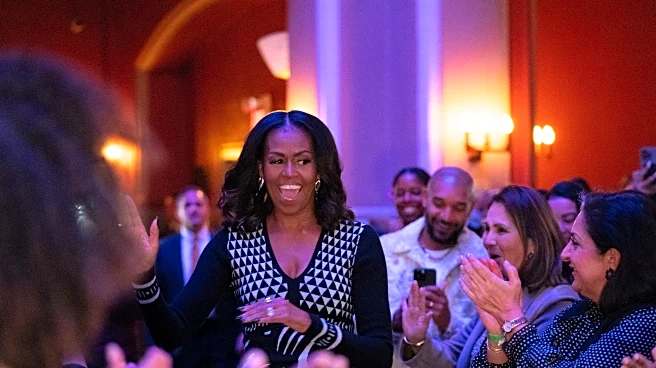What's Happening?
Michelle Obama, former First Lady of the United States, has released a new book titled 'The Look', which explores her fashion choices during her time in the White House. Co-authored with her stylist Meredith
Koop, the book delves into the practical and symbolic aspects of her wardrobe, from gowns to pantsuits. Obama emphasized the importance of clothing that was both welcoming and versatile, suitable for various activities from speeches to gardening. Her fashion choices were often aimed at sending positive messages and supporting emerging designers. The book also includes a special companion series to her podcast, discussing her style journey from Chicago to the national spotlight.
Why It's Important?
Michelle Obama's fashion choices have had a significant cultural impact, influencing public perceptions and fashion trends. Her emphasis on practicality and inclusivity in clothing reflects broader societal values of accessibility and approachability. By supporting up-and-coming designers, Obama has contributed to diversifying the fashion industry and promoting new talent. Her book offers insights into the intersection of fashion, politics, and personal expression, highlighting the role of clothing in shaping public narratives and identities.
What's Next?
The release of 'The Look' is likely to spark discussions on the role of fashion in political and social contexts. As Obama continues to engage with the public through her podcast and other media, her perspectives on style and its implications may influence future fashion trends and cultural dialogues. The book may also inspire other public figures to reflect on their own fashion choices and their impact on society.
Beyond the Headlines
Michelle Obama's reflections on her time in the White House, including her experiences in the East Wing, offer a unique perspective on the personal and professional challenges faced by First Ladies. Her approach to fashion as a tool for connection and empowerment highlights the broader cultural significance of clothing in fostering community and empathy. The book may also contribute to ongoing conversations about the representation of women in leadership roles and the importance of authenticity in public life.












